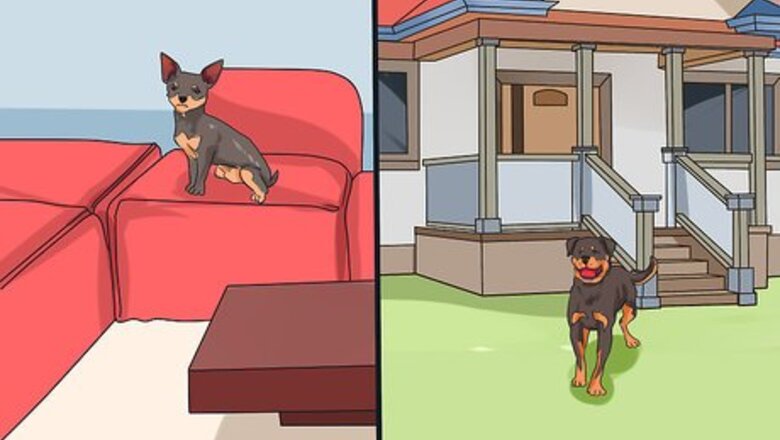
views
Considering Your Priorities
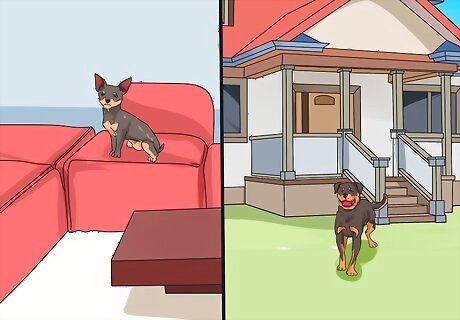
Adopt a dog that fits your lifestyle. Before you adopt a dog, you should think about where you live and how much time you have to spend with the dog. For example, a large breed like a Great Dane might not be the best choice if you live in a small apartment. You should also consider how much time you can spend with the dog. Even a laid back toy breed needs a walk every day! At the very minimum, all dogs need a 10-15 minute walk in the morning and the evening. This lets the dog relieve itself and get some exercise. That said, most dogs, even laid-back ones, would appreciate even more activity.
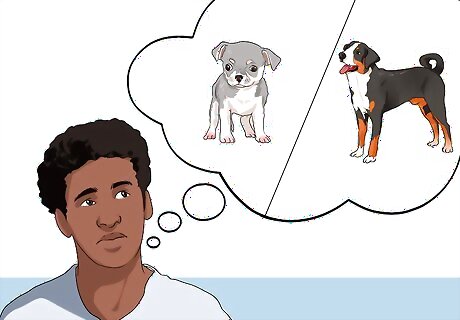
Consider the dog’s age. Think about whether your family will be better suited to an older dog, an adolescent, or a puppy. Many older dogs are in need of loving homes and are often already trained. That said, they may have more expensive health needs. Puppies need extensive time, dedication, and training. They will need to be played with multiple times throughout the day because they have so much energy.
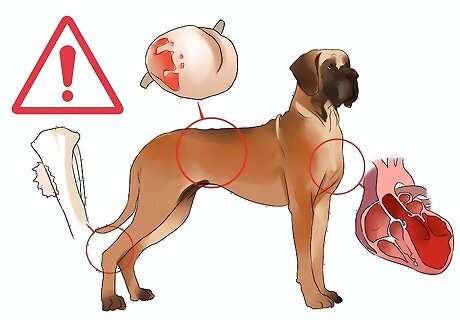
Beware of health issues. Before you adopt a laid-back dog, you should research potential health issues that are common in certain breeds. These issues can quickly turn into hefty vet bills and stressful situations. Owning a dog a lifelong commitment, whether your dog is sick or healthy.
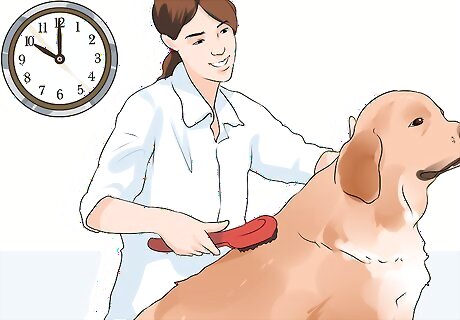
Think about grooming and maintenance. Different breeds need different types of maintenance. A short haired dog might not need grooming beyond the occasional bath and a weekly brushing. A long haired dog, like a Shih Tzu, will need more intensive grooming on a regular basis. Consider the cost and time required for grooming a dog before deciding on a breed.
Finding a Laid Back Breed

Think about a Shih Tzu. A Shih Tzu is a great choice if you’re looking for a toy breed that has a laid back personality. Shih Tzus have long, silky coats and are gentle, affectionate lap dogs. This breed is great with children, and its upbeat demeanor means the Shih Tzu needs lots of playtime. The breed can be difficult to train. Shih Tzus weigh between 9 and 16 pounds, and live between 10 and 18 years. Shih Tzus’ coats can grow exceptionally long, requiring excessive grooming. Most owners choose to keep their coats clipped short to cut maintenance.

Pick a Pug. The charming, yet mischievous, pug is a great pick for families that want a laid-back small dog. Pugs are generally healthy with even-tempered and loving temperaments. This breed has a medium energy level and sometimes gets into mischief. They are quite curious and enjoy regular walks and playtime. The breed is prone to health problems including brachycephalic syndrome and orthopedic problems. Pugs weigh 14-18 pounds, and live between 12 and 14 years. Pugs are prone to obesity. To prevent this, you will need to exercise them often and monitor their diet carefully. Play with your Pugs a few times everyday to keep them active. This will also help them stay out of trouble.
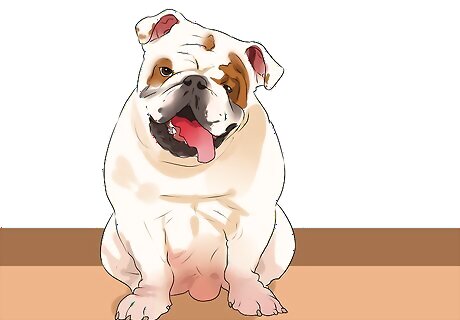
Consider a bulldog. Both English and American bulldogs are moderately friendly, docile, and mellow. This medium-sized breed is great with children, and very willing to please humans. In general, bulldogs get along well with other pets. Bulldogs tend to weigh between 40 and 50 pounds, and have a lifespan of 8-10 years. Bulldogs can develop skin problems if they are not groomed regularly.
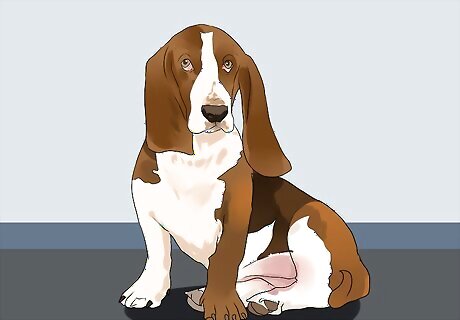
Think about a basset hound. Basset hounds are good-natured creatures that love to cuddle up with you on a lazy afternoon. They also love leisurely, but long walks. Basset hounds have a mid-range energy level. They are patient, charming, and low-key. While basset hounds do shed, their coats do not need extensive grooming. Basset hounds weigh between 50 and 65 pounds, and live between 10 and 12 years.

Choose a Newfoundland. Newfoundlands are known for their sweet, patient personalities. They are a highly intelligent breed, and can be easily trained. Newfoundlands make devoted companions and have a medium energy level. Since they are large in size, they need space to play and an owner who will prioritize playtime and daily walks. Newfoundlands have plush coats that require regular brushing and trimming. Newfoundlands are known to drool. They may leave drool spots around your home. Newfoundlands weigh between 120 and 150 pounds, and have a lifespan of 8 to 10 years.
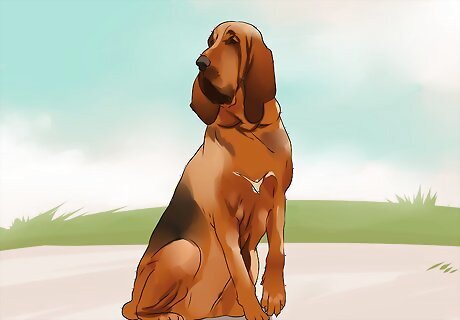
Adopt a bloodhound. Bloodhounds are a laid back breed known for being friendly, inquisitive, and independent. This large breed has a medium energy level, and can be quite affectionate with its family. Bloodhounds are bred to live in packs, and thrive in the company of adults, children, and other dogs. This breed needs daily walks to prevent it from becoming bored. They also need a fenced in space to sniff around on a regular basis. A bloodhound’s coat need occasional grooming, ranging from daily to weekly brushing. Bloodhounds tend to drool, sometimes excessively. This requires additional cleanup. Bloodhounds weigh between 80 and 110 pounds, and have a lifespan of 8 to 10 years.
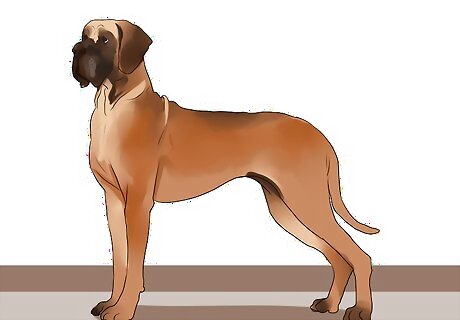
Consider a Great Dane. This large breed towers over other dogs, and is known for its docile, laid back personality. Great Danes make wonderful companions, and are obedient, agile, and friendly. Gentle and loving, the Great Dane makes a perfect family pet. With a medium energy level, this breed is easygoing. Great Danes need a good walk about twice each day. A Great Dane has a short coat that doesn’t need much maintenance. A weekly brushing and the occasional bath are enough to keep this pup looking dapper. Great Danes weigh between 110 and 190 pounds, and usually live between 7 and 10 years.
Selecting the Right Dog
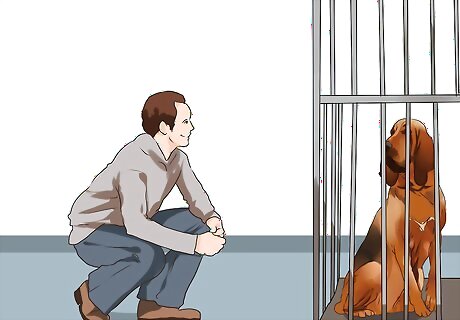
Consider adoption. Before you make the decision to seek out a breeder, consider adopting a dog from a local shelter or regional dog rescue instead. Adoption is cheaper than purchasing a puppy from a breeder, and there are many dogs in need of homes.

Visit local shelters. Before deciding to buy a dog from a breeder, you should visit local local animal shelters. Most municipalities have many animal shelters. While some of these may be no-kill facilities, many will euthanize dogs that are not adopted. Visit several shelters in person and online to see if you can find a dog that fits your lifestyle and desires.
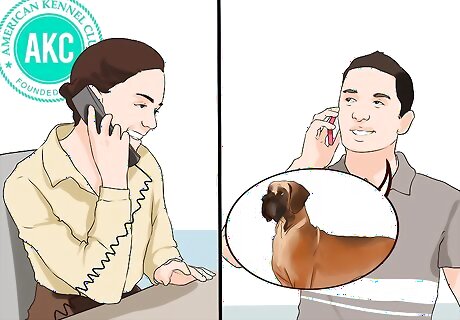
Contact a breed specific rescue network. If you want to adopt a specific breed of dog, contact a breed specific rescue group or network. This will allow you to rescue a dog in need while helping you find the right breed for your lifestyle. For example, the American Kennel Club has over 450 rescue network groups in the United States. Rescues will often help you find the right dog for your lifestyle and needs. Tell them that you want a laid-back dog, and they may know the perfect fit for you.
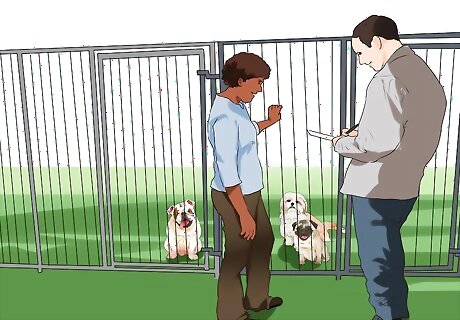
Work with a reputable breeder. If you decide that you do not want to adopt a dog, work with a reputable breeder. Seek a referral and meet the breeder in person at the facility. Inspect the conditions of the facility yourself and confirm the breeder’s credentials. Confirm the documentation of your puppy’s lineage before taking your puppy home. Ask the breeder if you can meet both of the parents of the puppy. Make sure to ask plenty of questions about the puppy's health, genetics, and pedigree. If the breeder does not answer these questions or let you see the parents, beware.
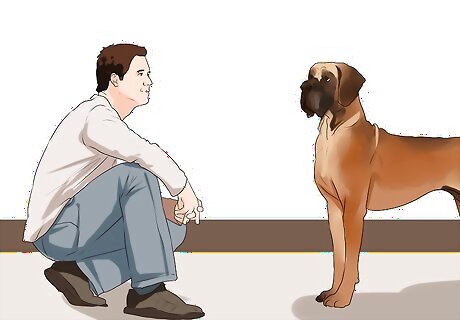
Meet the dog. If you find a dog that might be a good fit, take a trip to meet and spend time with the dog. Involve all members of your family in this process. It is important that you also involve canine members of the family. You'll want to make sure everyone gets along! Spend an hour with the new dog. Take the dog on a long walk, and play before committing to bring it home.
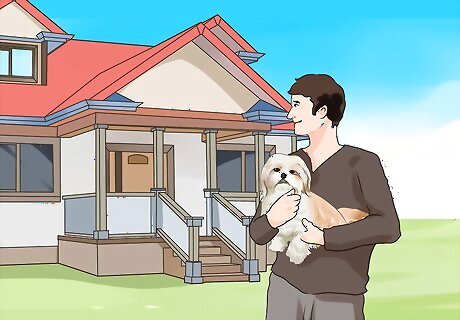
Take your new dog home. After you choose a dog, introduce it to your family members, and finish paperwork, you can bring home your new pet. Be sure you’re prepared with a collar, leash, bed or crate, toys, food, treats, and bowls for food and water. Also make sure you establish house rules in advance so you can start training your new dog immediately.














Comments
0 comment